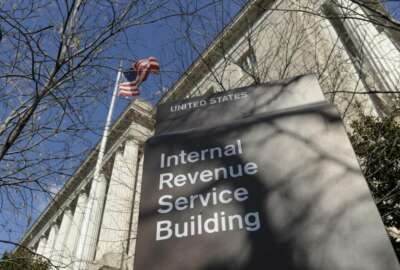

The Internal Revenue Service, halfway through a six-year IT modernization campaign, hasn’t received the funding it sought from Congress in order to retire some of...
The Internal Revenue Service, halfway through a six-year IT modernization campaign, hasn’t received the funding it sought from Congress in order to retire some of the oldest running systems in the federal government.
But the IRS expects funds it received through the American Rescue Plan last year could allow the agency to potentially double the number of modernization programs it can tackle, starting this fiscal year.
The agency, in its recently released IT Annual Key Insights Report, found that even with “limited funding,” the IRS delivered more than 80 new capabilities and enhancements in the first three years of its Integrated Modernization Business Plan.
The IRS said these upgrades improved the efficiency and security of its IT infrastructure.
IRS Chief Information Officer Nancy Sieger said in the report that the IRS made progress on its IT modernization goals, all while dealing with “unprecedented demand due to the pandemic.”
Later this fiscal year, the IRS expects to publish a second version of its IT modernization plan, outlining how the agency will approach the final three years of its modernization journey.
The report states the IRS is “at an inflection point,” having concluded the first phase of its six-year IT modernization plan, and is able to accelerate modernization efforts using ARP funds.
The report outlines several IRS goals to improve its level of taxpayer service, in light of major tax return and call backlogs since the start of the COVID-19 pandemic.
The agency must also improve its level of customer experience under the 2019 Taxpayer First Act.
“Considering the new responsibilities of the IRS, additional funding provided by the American Rescue Plan and the mandate to deliver on the promises of the Taxpayer First Act, we’re embracing the opportunity to reset,” Sieger wrote.
The IRS said the American Rescue Plan funds will help it complete the modernization of the Individual Master File, the system it uses to store and process tax returns.
The agency said it completed nearly 70% of the code conversion as part of the effort to retire legacy code and reengineer the most complex aspects of the Individual Master File. The IRS said the overhaul will simplify its IT infrastructure and will enable it to respond more quickly to legislative changes to the tax code.
The IMF, created in the 1960s by IBM, is coded in assembly language and COBOL, programming languages that are no longer commonly taught. It’s one of the oldest legacy systems still running in the federal government.
The IRS expects to publish an updated IT modernization plan before the end of fiscal 2022, and will “introduce a long-term approach to technological advances while incorporating our lessons learned from the last three years of our modernization journey.”
The “Mod Plan 2.0” focuses on improving taxpayers’ interactions with the IRS, and also improving internal capabilities for IRS employees.
The IRS plans to expand its callback feature to cover about 70% of its call volume, which will prevent taxpayers from having to wait on hold. It also expects to expand capabilities for voice bots and chatbots.
The IRS said it has already provided its customer callback availability to 16 toll-free telephone applications, accounting for approximately 40% of its call volume.
The agency also expects to provide new direct free and electronic tax filing capabilities electronic filing, and make it easier to submit tax-related documents online.
The IRS also is looking to move nearly all of its business units to its Enterprise Case Management platform.
“We will incrementally deliver additional case management functionality and wider integration with data and common services across the IRS,” the report states.
The IRS is also looking to scale its digital operations with the goal of reducing its dependency on paper communications.
“Taxpayers will increasingly be able to interface with IRS digitally which increases accessibility while also allowing the IRS to reduce operating costs for paper processing and on-site services,” the report states.
The IRS expects to move to a hybrid and multi-cloud environment, with the goal of making its IT infrastructure more scalable and secure.
“This will allow us to reduce our current technology footprint and associated costs while increasing the agility for more rapid deliveries,” the report states.
By 2023, the IRS plans to deploy a new IT services platform.
“This modernization for agile applications will allow us to respond rapidly to ever-evolving legislation and taxpayer needs, while reducing operating costs,” the report states.
The IRS expects artificial intelligence and machine learning technology will improve the agency’s fraud detection and automate some workloads for its employees.
The agency will also develop an enterprise robotic process automation (RPA) platform and expects all IRS business units will have access to automated processes by 2023.
“This will allow us to automate business processes and reduce the burden on our workforce so that their time is spent on more high-value tasks. Ultimately, this allows our agency to operate more efficiently and deliver more value,” the report states.
The IRS also expects to use advanced analytics to detect anomalies and improve its audit and enforcement operations.
“With modern data solutions, we will be able to give taxpayers access to additional digital services and up-to-the-minute account information,” the report states.
The Electronic Tax Administration Advisory Committee (ETAAC), in its annual report to Congress, urges lawmakers to provide the agency with “flexible, sustainable, predictable, multi-year funding” for its operations.
The report found the IRS experienced over 100 continuing resolutions since 2001, and that funding uncertainty forces the agency to opt for “more expensive, less effective, short-term solutions.”
IRS Commissioner Chuck Rettig, whose five-year term ends in November, told the committee the IRS workforce went to extraordinary lengths over the past two years to deliver $1.5 trillion in financial relief to the public through Economic Impact Payments (EIPs) and tax refunds.
“I think that history will be very polite to the Internal Revenue Service, and to everybody who’s helped the Internal Revenue Service during this period of time,” Rettig said last month.
Copyright © 2025 Federal News Network. All rights reserved. This website is not intended for users located within the European Economic Area.
Jory Heckman is a reporter at Federal News Network covering U.S. Postal Service, IRS, big data and technology issues.
Follow @jheckmanWFED



